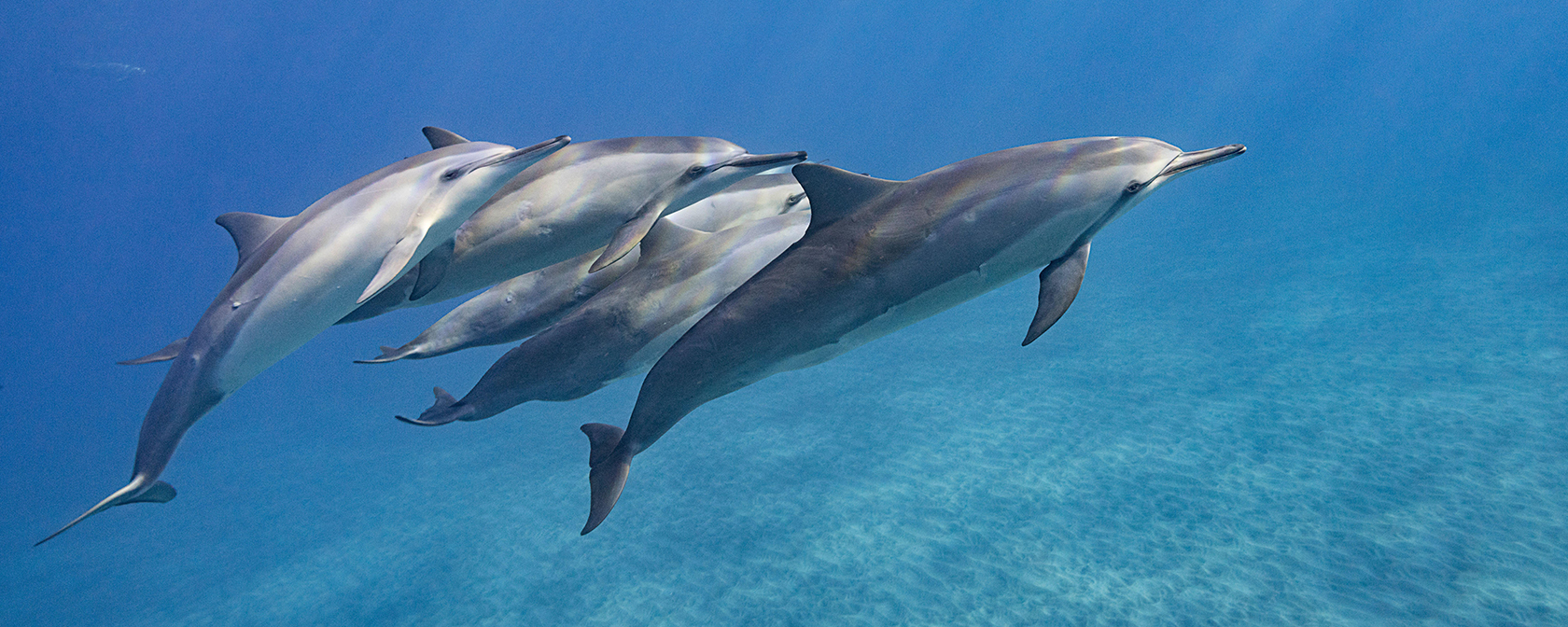By Sara Amundson and Kitty Block
Hawaiian spinner dolphins, named for their acrobatic displays like leaping out of the water and spinning in the air, are nocturnal. To make it harder for sharks to detect them, they hunt for food and socialize at night. During the day, they rest in sheltered coves—safe from sharks and other ocean dangers. Because dolphins must be conscious in order to breathe, in these coves they still swim and breathe slowly while doing their version of “napping.”
But wild Hawaiian spinner dolphins have become a tourist attraction. Tour operators take tourists out to see and swim near the dolphins. Although some tour operators instruct their passengers to stay at least 50 yards from the dolphins to minimize the possibility of disturbing the resting dolphins, many do not. Unfortunately, this means that the animals have been faced with groups of tourists coming into their coves and interrupting their rest. These tourism activities can severely disrupt the dolphins’ ability to achieve a natural resting state, causing negative impacts on the wider population of spinner dolphins over time, according to the National Marine Fisheries Service.
Now, in a win for dolphins and responsible wildlife tourism, the NMFS has finalized a rule mandating that swimmers maintain a distance of at least 50 yards from these dolphins in waters surrounding the Hawaiian Islands. The agency also proposed mandatory closures from 6 a.m. to 3 p.m. at five sites in the main Hawaiian Islands.
This new rule has been years in the making. In 2016, the NMFS proposed a regulation that would mandate that swimmers stay 50 yards from dolphins and that irresponsible tour operators could be fined if swimmers did not comply. We joined other conservation groups and responsible tour operators in strongly supporting this regulation. Unfortunately, the proposed regulation has been stalled for five years, and during that time, the daytime harassment of these nocturnal dolphins has continued. But we are celebrating the news that the federal government finally stepped up to protect these animals. Keeping swimmers away from close contact will allow the dolphins the time and space to rest and recharge their energy while allowing tourism to continue in a responsible way.
Wildlife tourism can be a wonderful way to connect with nature; seeing animals in their native habitats can foster a sense of wonder and cultivate a sense of the responsibility we all have to protect and preserve animals. If you asked many of our hardworking team members here at the Humane Society family of organizations why they decided to work in animal protection, many would have a story to tell about seeing an animal in the wild and how that experience sat with them and made them decide to do the hard work of advocating and protecting that species. That said, wildlife tourism absolutely must be conducted responsibly. We are so pleased that spinner dolphins in resting coves around Hawaii are finally getting protected from these disturbances.
Kitty Block is President and CEO of the Humane Society of the United States.




